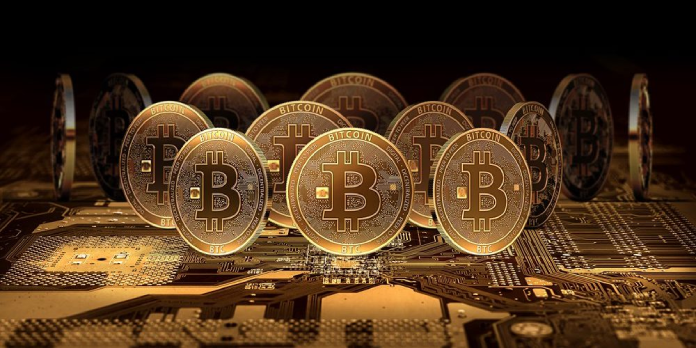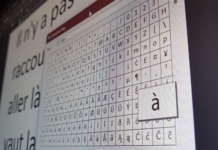Here we can see, “99 Cryptocurrency Definitions: Everything You Need to Know About Cryptocurrency”
Cryptocurrencies are digital currencies that run on blockchains, which are decentralised computer networks. Bitcoin, Ethereum, Tether, Cardano, Binance Coin, and USD Coin are the most popular and generally acknowledged cryptocurrencies.
Cryptocurrencies are growing in popularity, with new ones appearing all the time, and they are here to stay. The biggest cryptocurrencies, Bitcoin and Ethereum, have proven reliable, and their popularity is growing.
This cheat sheet covers the important concepts you need to know and understand to be well-prepared for your crypto experience, whether you want to engage in cryptocurrencies or learn more about them. Consider this cheat sheet a set of road signs for navigating the cryptocurrency world.
The Glossary of Cryptocurrency Terms
| # | Term | Definition |
|---|---|---|
| 1 | Block | A block is a computer file that retains a record, or ledger, of bitcoin transactions completed during a specific period and is worth a certain amount of coins. One block in the Bitcoin network, for example, is worth 6.25 Bitcoins, a value that will halve every four years until the last block is created in 2140. The size of a block varies according to the blockchain. The theoretical limit for Bitcoin is 4MB, but Bitcoin Cash enables anything from 8MB to 32MB. |
| 2 | Blockchain | A decentralized computer network consists of autonomous yet connected blocks, copies of which are distributed throughout the network. When one or more Bitcoin transactions are added to a block, a new block is formed, and the transaction is verified and updated across the blockchain. |
| 3 | Distributed Ledger | A blockchain is also known as a ledger. |
| 4 | Genesis Block | Unspendable coins are contained in the first block of a blockchain. The genesis block of Bitcoin was produced on January 3, 2009, with 50 Bitcoins. |
| 5 | Block Height | A blockchain's total number of connected blocks. |
| 6 | Peer-to-Peer | The direct connection of two or more computers to each other without using a centralized third-party middleman. Blockchains are decentralized networks that function on peer-to-peer networks. |
| 7 | Protocol | The program connects the blocks and establishes the rules for adding new blocks to the decentralized network. |
| 8 | Algorithm | The algorithm or method for generating keys that keep transactions secure. Hash, Public Key, and Private Key are the three main keys that cryptocurrencies rely on (see below). |
| 9 | Encryption | An algorithm is used to turn legible text into illegible text, referred to as a hash or a key. The term cryptocurrency comes from this procedure, which is also known as cryptography. |
| 10 | Hash | A verified and a string of letters and numbers represents the submitted transaction. It's commonly referred to as Hash or TxID. |
| 11 | Hash Rate | The rate at which a computer verifies and submits a transaction, creating a new Hash in the process. It is the average speed at which a blockchain generates new hashes, and it is measured in hash/second. |
| 12 | Public Key | A string of letters and numbers identifies the address of your wallet in the Blockchain. Like your email address or bank account number, this information can be shared with others to obtain cryptocurrency. |
| 13 | Private Key | A combination of letters and digits allows you to access your wallet. Like your password or PIN, this is private information that should never be shared. |
| 14 | Seed Phrase | A 12-, 18-, or 24-word phrase that only you and you alone know and that serves as a backup to your private keys. A seed phrase will help you recover your private key if you forget or lose it. |
| 15 | Wallet | A blockchain file that receives and keeps your bitcoin, similar to how your email inbox receives and stores emails. Both a Public Key and a Private Key are used to operate it. |
| 16 | Cold Wallet | The offline storing of your wallet's Public and Private Keys by printing them on a piece of paper or putting them on an external hard drive that is not connected to the internet to avoid hacking loss. When you have a significant number of coins in your wallet, cold storage is recommended. |
| 17 | Hot Wallet | Your wallet's public and private keys are saved on an app connected to the internet and used to access it. If your computer or phone is hacked, your keys could be stolen. |
| 18 | Mining | The process of a computer or a collection of computers verifying transactions. Two things happen when all of the computers accept the transaction on the network: a new block is added to the chain, and new coins are minted and added to the new block. |
| 19 | Consensus | The procedure for verifying and submitting transactions. Proof of Work (PoW), Proof of Authority (PoA), and Proof of Stake are the three basic forms of consensus algorithms (PoS). |
| 20 | Mempool | A "waiting area" for valid blocks is a group of validated and submitted transactions awaiting confirmation by all computers in the Bitcoin network. Congestion is indicated by a large mempool size, which signals a backlog of blocks waiting to be added to the blockchain. |
| 21 | Proof of Work (PoW) | Multiple computers in a blockchain compete to mine blocks using this algorithm. Before all other computers approve the new block in the blockchain, the first computer to mine a block must prove that it consumed a particular amount of energy to do so. |
| 22 | Proof of Authority (PoA) | An algorithm that grants authority to mine blocks to a trusted computer or a group of trusted computers. This method is substantially faster than PoW. |
| 23 | Proof of Stake (PoS) | A method that allows a computer to mine blocks based on the number of bitcoin it has. For example, a machine with 2% of the coins available can only mine 2% of all blocks. |
| 24 | Proof of Activity (PoA) | An algorithm verifies transactions using both Proof of Work (PoW) and Proof of Stake (PoS) after a block has been successfully inserted, the system shifts from PoW to PoS. |
| 25 | Proof of Burn (PoB) | A method for computers to mine blocks based on the number of coins they "burn." Sending coins to an unspendable address causes them to be burnt. The more coins that are burned, the more opportunities there are to mine. |
| 26 | Non-Fungible Token | Each NFT is unique as a fingerprint because it is stored within a block and cannot be copied or altered. This is why NFTs are used to prove ownership of digital assets, such as a JPEG image or a digital painting, or to grant access to the item. |
| 27 | Fiat Currency | Government-issued money is circulated through banks. On the other hand, cryptocurrencies are created by computers and circulated through a peer-to-peer network or blockchain. |
| 28 | Node | A blockchain computer is a computer that is a component of the blockchain network. As a result, a blockchain is a network of nodes. |
| 29 | Faucet | A website or program rewards users with free cryptocurrency in exchange for joining up or completing certain tasks. Some (but not all) of these offers are scams, so be cautious before signing up or sharing any personal information. |
| 30 | Whale | Individuals or organizations who own a large number of a cryptocurrency's coins. The minimum number of coins required to qualify as a Whale in Bitcoin is 1,000. A Dolphin or a Fish is a smaller holding. |
| 31 | Nonce | A one-time-only random number is created and used to verify fresh blocks. When a block is submitted, it is given a nonce to ensure it is a new block and not an old one re-submitted to the chain. |
| 32 | Smart Contracts | Lines of code that reside on the blockchain and are used to carry out the logic that the developer has designed. When data is sent to the blockchain, the code does what it is supposed to do, such as making a dividend. |
| 33 | Solidity | The programming language that Ethereum-based smart contracts are written in. |
| 34 | Oracle | A code that collects data from various sources both inside and outside the blockchain validates analyses and feeds the results into a smart contract for further action. Smart contracts rely on oracle data to carry out their tasks. |
| 35 | Token | A coin that symbolizes an asset or has a specialized application in the blockchain ecosystem. Some tokens are used for governance, allowing token holders to vote on blockchain developments. |
| 36 | Chain Linking | The process of connecting two separate Blockchains, such as Bitcoin and Ethereum, to move cryptocurrencies between them. The transaction must be recorded and verified in both blockchains simultaneously for it to be successful. |
| 37 | Block Explorer | A blockchain search engine that allows you to engage in blockchain transactions and access blockchain data. Blockchain.com, blockstream.info, blockexplorer.com, blockcypher.com, and btc.com are other examples. |
| 38 | Application-Specific Integrated Circuit (ASIC) | A dedicated circuit created for machines that solely mine one sort of cryptocurrency and do nothing else. Only Bitcoin can be mined with a Bitcoin ASIC circuit, not Ethereum. |
| 39 | Altcoins | Because Bitcoin was the first cryptocurrency, any cryptocurrency that isn't Bitcoin is referred to as an altcoin (such as Ethereum, Litecoin, and Cardano). There are thousands of altcoins, some of which are lawful and others used as financial crime conduits. |
| 40 | Decentralized Finance (DeFi) | A financial service that uses blockchains and smart contracts to make financial and banking services more accessible. Because DeFis are automated, they give everyone access to services previously only available to a select few. |
| 41 | Exchange | A website that allows you to exchange cryptocurrencies for fiat currencies such as dollars or euros and fiat currency for cryptocurrency and cryptocurrency for cryptocurrency. |
| 42 | Bitcoin | The very first digital currency. It was the first cryptocurrency to be released in 2009, and it is still the most valuable and largest cryptocurrency today. |
| 43 | SATS | Bitcoin's smallest unit, equivalent to 0.00000001 BTC. Satoshi Nakamoto, the putative founder of bitcoin, is referred to as Satoshi. |
| 44 | Ethereum | Ethereum is a blockchain with its cryptocurrency, Ether. Unlike the Bitcoin blockchain, Ethereum allows decentralized programs to be built on top of it, allowing Ethereum to go beyond mining to include decentralized financial services, gaming, and a variety of other decentralized applications. |
| 45 | Ether (ETH) | The Ethereum network's native cryptocurrency. Ethereum, on the other hand, accepts a variety of cryptocurrencies, including Bitcoin. |
| 46 | Gwei | The Ether's smallest unit. 0.000000001 ETH is equal to 1 gwei (10-9 ETH). As a result, one ETH is equal to one billion gwei. |
| 47 | Gas | A miner's charge for validating and submitting transactions on the Ethereum network. The requirement of Gas for each transaction protects Ethereum from becoming clogged with invalid transactions. |
| 48 | dApps (Decentralized Apps) | Applications or programs that run on a blockchain and are not controlled by a central authority. If Twitter became a dApp, no one, including Twitter, could erase a message after it was posted. |
| 49 | Unspent Transaction Output (UTXO) Model | A payment mechanism in which a transaction is split into two parts: the first part delivers the required number of coins to the receiver, while the second part sends the unspent balance to a different address in the sender's wallet. The total quantity of coins in the wallet is determined by adding all of the wallet's unspent balances. |
| 50 | Account/Balance Model | A payment system in which a transaction entails two simultaneous actions: the owner's wallet balance is lowered by the exact quantity of coins sent out, and the recipient's wallet balance is boosted by coins received; there is no list of unspent balances, only an overall balance. In Ethereum, this paradigm is employed, but in Bitcoin, the UTXO model is used. |
| 51 | Fork | When the blockchain's algorithm is modified, a split occurs if different computers (miners) disagree about accepting a new algorithm, one group updates to the new algorithm. In contrast, the other group uses the old, resulting in two independent blockchains with the same origin. |
| 52 | Hard Fork | The blockchain is updated regularly. Computers running an older version of the blockchain are ejected from the new blockchain. |
| 53 | Soft Fork | A tweak to the protocol that compels computers to update their software regularly. Those who do not upgrade will stay on the blockchain, but they will not submit new blocks. |
| 54 | Market Capitalization | Multiplying the number of coins in circulation by the current market price of a single coin yield the entire worth of a cryptocurrency. This figure could be in the hundreds of billions of dollars or trillions of dollars. |
| 55 | The Flippening | The date when Ethereum is projected to surpass Bitcoin in terms of market valuation. |
| 56 | Exchange | A website or app, like Binance, that lets you open an account and buy cryptocurrencies with bitcoins, altcoins, or fiat currency such as dollars or Euros. Funds are transferred to your account using standard means such as PayPal or wire transfer. |
| 57 | Arbitrage | Purchasing cryptocurrencies on one exchange and then selling them on another at a higher price. |
| 58 | Stablecoin | A cryptocurrency whose value is linked to the value of a fiat currency, a commodity such as gold, or whose supply is regulated by an algorithm, guaranteeing the currency's value remains steady. Tether is the most well-known stablecoin, with a value of about one US dollar. |
| 59 | Memecoin | A cryptocurrency that was created as a prank. Memecoins have no real-world utility and are only valuable because many people think they're hilarious and buy them for that reason. Dogecoin is the most well-known. |
| 60 | Dollar Cost Averaging (DCA) | Buying a certain quantity of cryptocurrency on a weekly, monthly, or annual basis regardless of price variations. This takes the emotion out of the investment process while maintaining consistency and reaping the benefits of price drops. |
| 61 | Casascius Coin | Real metal bitcoins made by Bitcoin user Casascius (Mike Caldwell), each with a piece of paper containing the private key for a specified amount of bitcoins. A total of 27,673 Casascius coins, worth a total of 59,383.9 BTC, were struck. |
| 62 | Coin Mixer | A program that makes bitcoin transactions untraceable and anonymous. This is accomplished by taking a single transaction, combining it with others, and then returning it to the owner at a different address and in different amounts. |
| 63 | Initial Coin Offering (ICO) | People are given a new cryptocurrency in exchange for fiat money, bitcoins, or altcoins. Participants in the ICO hope that the new cryptocurrency they purchased will gain popularity and increase in value. |
| 64 | Anti-Money Laundering (AML) | Anti-money laundering policies and regulations are in place. |
| 65 | Know your Customer (KYC) | The steps are taken to validate a crypto user's identity and link it to their wallet. |
| 66 | Double Spend | An attempt to transmit the identical bitcoin payment to two distinct wallets at the same time. |
| 67 | Escrow | A blockchain third party, such as BitPay, holds cryptocurrency until the vendor gets payment before releasing it to the buyer. |
| 68 | HODL | This is a common misspelling of "hold," It refers to holding on to your crypto assets until the market recovers. |
| 69 | FOMO (Fear of Missing Out) | Selling other assets to invest in a cryptocurrency with a rising value. |
| 70 | FUD (Fear, Uncertainty, and Doubt) | FUD is common among those who are not involved in the crypto field. |
| 71 | Rekt | Borrowed forms were destroyed, resulting in significant losses. |
| 72 | Bull Market | A period of time when the price of a cryptocurrency has been rising steadily. |
| 73 | Mooning | Due to a long bull market run, the price of a cryptocurrency is skyrocketing—going to the moon. |
| 74 | Pump and Dump | Buying a cryptocurrency in big quantities to inflate its price and encourage others to invest, then selling it all when the price rises and a profit can be earned. |
| 75 | Shill | Someone who promotes an altcoin with the hopes of profiting from its rise in value. |
| 76 | Bear Market | A period when the price of a cryptocurrency falls for an extended period. |
| 77 | Bagholder | An investor who owns a coin that is worth much less than the price they paid for it. |
| 78 | Capitulation | Selling a cryptocurrency at a substantial loss due to a loss of faith in its future value. |
| 79 | White Paper | A document that explains the many components of a blockchain and how it will work for potential blockchain users. The publication of a white paper precedes the launch of a blockchain. |
| 80 | 51% Attack | This refers to a machine or collection of computers to verify more than half of all network transactions. This allows them to undo transactions, spend bitcoin multiple times, and control which blocks are added and which are not. Known Names |
| Famous Names | ||
| 81 | Satoshi Nakamoto | Bitcoin was created by a single individual or a group of people. Satoshi Nakamoto's identity or identities have never been proven. |
| 82 | Nick Szabo | Cryptologist and lawyer who developed smart contract technology and the Bit Gold algorithm. Satoshi Nakamoto is also suspected. |
| 83 | Craig Wright | Australian entrepreneur with over 150 patents in distributed registry technology, smart contracts, and six cryptocurrencies. Satoshi Nakamoto is a person who claims to be Satoshi Nakamoto. |
| 84 | Vitalik Buterin | Founder of Ethereum. |
| 85 | Changpen Zhao | The founder of Hong Kong based cryptocurrency exchange Binance. |
| 86 | Pavel Durov | Telegram Open Network, the Gram money, and the TON blockchain technology were all founded by him. |
| 87 | Brian Armstrong | Founder and CEO of Coinbase, a cryptocurrency exchange based in California. |
| 88 | Jack Dorsey | CEO of Square (and Twitter), a mobile payments startup that allows people to buy Bitcoin. |
| 89 | Brandon Chaz | Coinmarketcap, the world's largest cryptocurrency aggregator, was founded by him. This service compiles data from all exchanges and calculates the value of cryptocurrency using that information. |
| 90 | Elizabeth Rossiello | Founder of BitPesa, a Kenyan based cryptocurrency exchange. |
| 91 | David A. Marcus | Director of Libra, a cryptocurrency developed by Facebook and other companies. |
| 92 | Cameron and Tyler Winklevoss | Owners of crypto exchange Gemini and digital art auction platform Nifty Gateway |
| 93 | Matthew Roszak | Chairman of Bloq, a blockchain infrastructure company. |
| 94 | Degen Spartan | DeFi Twitter Influencer |
| 95 | Laura Shin | Founder and Host of Unchained and Unconfirmed cryptocurrency podcasts |
| 96 | Charlie Lee | Founder of the third cryptocurrency in history: Litecoin. |
| 97 | Justin Sun | Founder of the TRON cryptocurrency. |
| 98 | Charles Hoskinson | Co-founder of Ethereum, Founder of Cardano (ADA). |
| 99 | Sergey Nazarov | Co-founder of Chainlink, the first blockchain oracle. |
What Does the Future Hold for Cryptocurrency?
The Matrix and Terminator films depict what might happen to societies when they achieve incredible technical power, centralise it, and lose it to an adversary. Because they run on decentralised computer networks, cryptocurrencies are meant to prevent a Matrix or Skynet scenario.
While cryptocurrencies can bring decentralised financial services to everyone on the planet, they still have a long way to go in terms of development and integration. During that time, fiat currencies and the centralised networks on which they are based will continue to have low volatility and a near-monopoly on global financial transactions.
Conclusion
I hope you found this information helpful. Please fill out the form below if you have any queries or comments.
User Questions:
- Can you list the three components of a cryptocurrency transaction?
Every block that is validated earns miners Bitcoin. Blocks are added to the Bitcoin blockchain by miners. The sender, receiver, and the rest of the Bitcoin network all triple-verify each transaction.
- What is the most affordable cryptocurrency?
Dogecoin (DOGE): $0.2843 is the cheapest cryptocurrency to buy in 2021, given Elon Musk’s ascent to fame earlier this year.
- How do you interpret digital currency?
A cryptocurrency is digital money that uses encryption techniques to establish an alternate form of payment. Because of encryption technologies, cryptocurrencies can be used as both a currency and a virtual accounting system. A cryptocurrency wallet is required to use cryptocurrencies.
4. 50 crypto terms you should know
- Cryptocurrency terminology (40 terms you should know)
Cryptocurrency terminology (40 terms you should know) from CryptoCurrency



